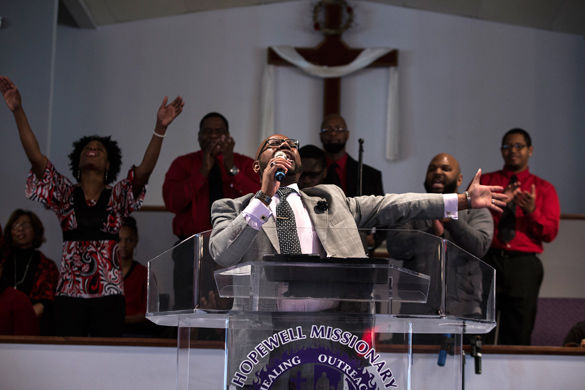African-American history seen in black churches

February 18, 2015
The expression of African-American faith is rich in culture and has deep, historical roots that touch nearly all branches of Christianity.
“The greatest value of community in black churches is so many of the black churches, especially those organized during the times of slavery, were opportunities for people to organize themselves, educate themselves, strengthen one another and plan for liberation without anybody else knowing it,” the Rev. Joseph Brown said. “Those churches are incredibly important to the history of black people in America.”
However, Catholicism—the third-largest denomination of black Christians in the U.S.—is often left out when many think of the African-American community.
Advertisement
“People don’t count black Catholics or even recognize they exist in the same way they recognize Methodist, Baptist or Presbyterian,” Brown said.
Brown, ordained as a Catholic priest in 1972, said much of Catholic theology is compatible with traditional west African theology.
Because of this, the ritualistic practices of the Catholic church that capture methods of African-American worship are culturally-based.
This includes the manner in which music, speech and dance are performed in services.
Cultural expression does not detract from Catholicism, or vice verse—Brown makes sure of that.
“I’m one of those people that helps to plan, organize and coordinate such experiences in the black Catholic church that are as authentically black as they are truly Catholic,” Brown said.
Though the cultural basis is the same, what differentiates black Catholic churches from most Protestant denominations is the highly organized set of rituals.
Advertisement*
“We have a blessing for everything, we have a prayer for everything,” Brown said.
This does not always correlate with the way most Protestant churches conduct worship.
Chris Swims, pastor of Hopewell Missionary Baptist Church in Carbondale, said his church puts an emphasis on preaching and singing, with a choir of roughly 20 people.
Regardless of the method, Swims said the goal is the sense in community members share.
“We have a great big melting pot,” he said. “We strive to reach people in whatever we’re doing.”
Churches are far more diverse now than they were historically, said the Rev. Bob Flannery, a Catholic priest at the Church of St. Francis Xavier.
“Unfortunately part of it was segregation,” he said. “[Black people] were not permitted to worship with the white churches.”
The formation of black churches also has ties to the fight against slavery.
Brown said some early African Methodist Episcopal churches played a crucial part in the Underground Railroad.
“They were organized around helping their brothers and sisters be free,” he said.
The churches would appear to be solely for worship, but had fake walls with runaway slaves behind them. The people would hide in the walls until they were able to make their escape out of town.
Brown said this is one of the many glories in black history. It was a contributing factor to establishing feelings of solidarity between patrons of churches today.
Jessica Brown can be reached at [email protected].
Advertisement







